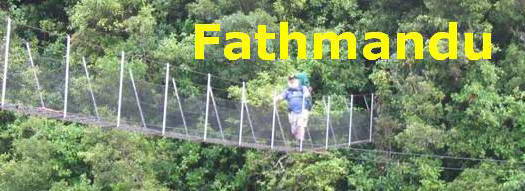The Okura Walkway 1
Haigh's Access to Beach (page 2)
Every piece of bush I've been in has it's own particular subset of small-leaved Coprosmas. At Woodhill, it's primarily C. rhamnoides. Here it's C. areolata (below) and (I'm guessing) C. arborea.
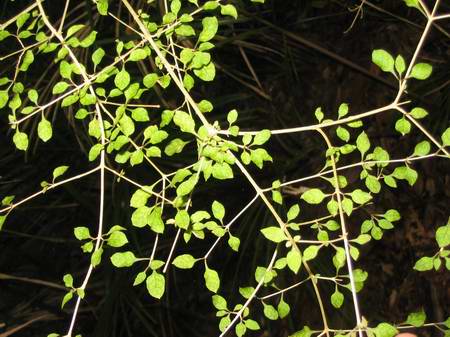
Taking a closer look, we can see the pointed leaves and pronounced network of veins that distinguish this species. These leaves are about 1.5 - 2x natural size
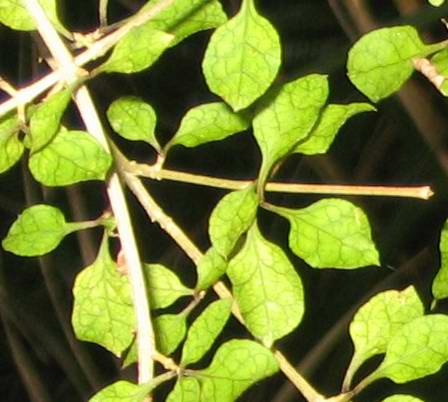
C. arborea in it's juvenile stage is very like C.spathulata, but a little more leafy. There's a photo up ahead. Watch out for it.
Also on the side of the path as we climb a little is a young putaputaweta.
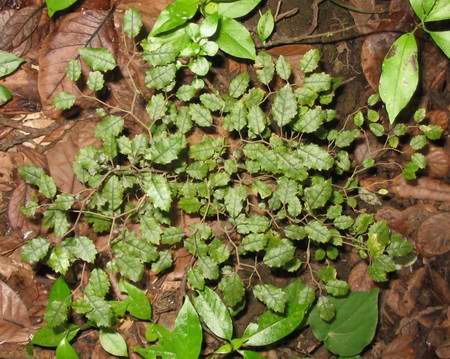
Here is my botany lesson for today. At a number of points along the track, DoC has placed identifying labels so that we can put a name to plants growing nearby.
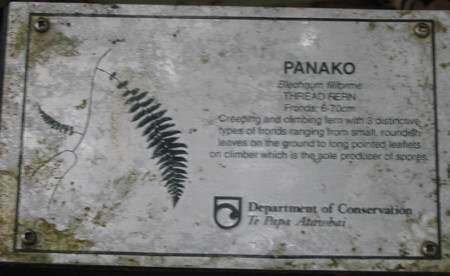
Here is the plant itself with two of its leaf forms quite visible
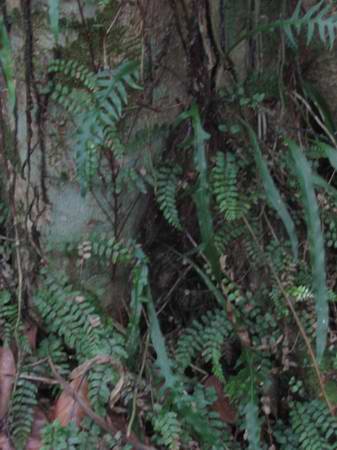
Unfortunately, the ferns and shrubs and trees attached to about half of these information signs has now disappeared, which is something that probably needs regular monitoring if the job is worth doing in the first place.
There's also a small Coprosma grandifolia growing nearby. The leaves on this can be upwards of 200mm in length, at the other extreme from its small leaved brothers.
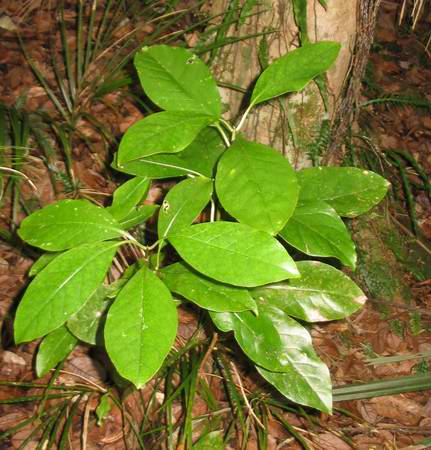
I think this (below) is a young tawa
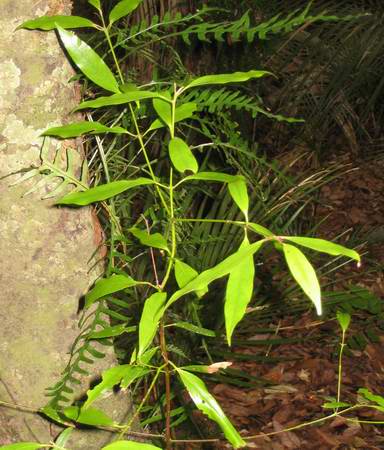
We start getting seriously into steps around about here.
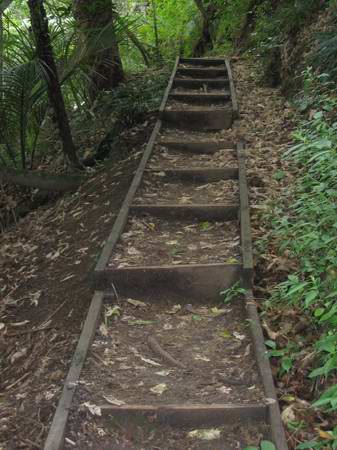
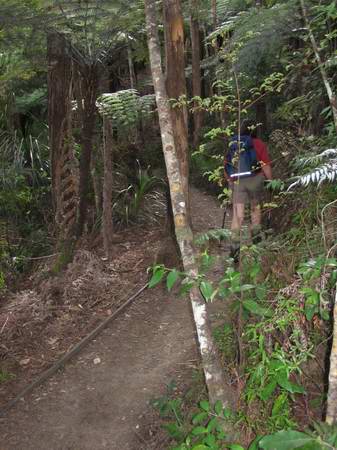
Somewhere along here, I meet up again with Miranda, still bursting with energy. She has been to the top and come back to meet me. She heads off again and every now and again I meet her heading back up a flight of steps or a slope that has any decent promise of getting her heartrate up. I continue perusing the side of the path for interesting plants to photograph and make encouraging noises.
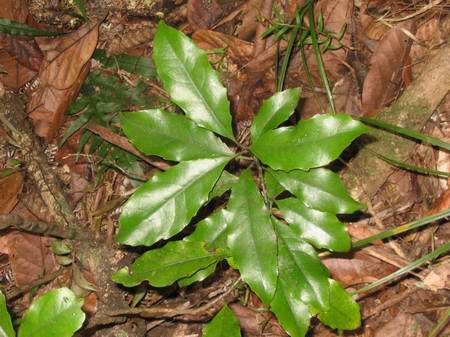
This one I'm pretty sure is a young pigeonwood, but I'm not confident yet distinguishing it in its young form from Alseuosmia macrophylla, the karapapa, which is also present acording to a DOC information label, though not in the immediate vicinity of the label. That one must have died.
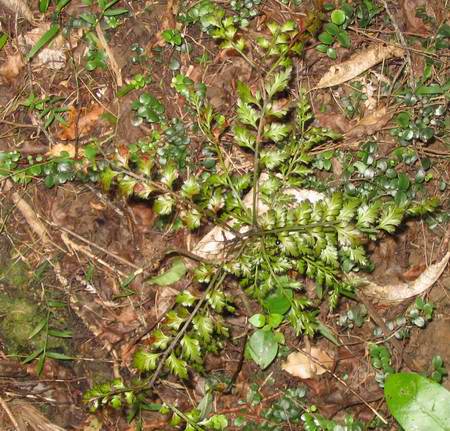
This is a young tanekaha, and this
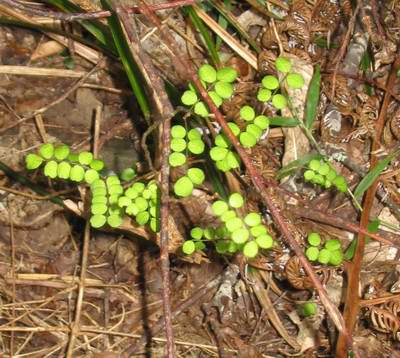
is a young kowhai.
I have a theory about the 'wh' sound in Maori. The language was transcribed by Englishmen who, unlike those who transcribed Fijian, had a complete font available to them. They had an "f" and they had a "v" and they had a plain "w".
I think they recorded what they heard, and what they heard was a sound that corresponded to the 'wh' used in English when, while, and which. If you listen to an educated Englishman you can still hear the difference in pronunciation between which and witch. Not so clear in modern New Zealand English, but in educated English even today, the distinction is clear.
Wh is sounded in educated English as if it were 'hw', with an h sound before the w, and I believe that is the sound that was made by the Maori who assisted in the first transcriptions.
Regional variations may well have been present but I think the current fashion for pronouncing Whangarei as "Fungaray" is more the result of Maori politics than it is a reflection of what the first Englishmen heard.
If they had heard an 'f ' they'd have used an 'f ', but they didn't.
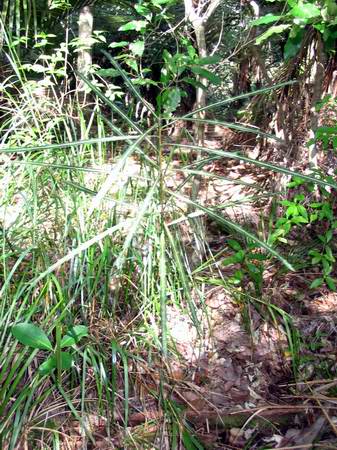
Here's an excellent specimen of juvenile lancewood, with it's ungainly adolescent leaves.
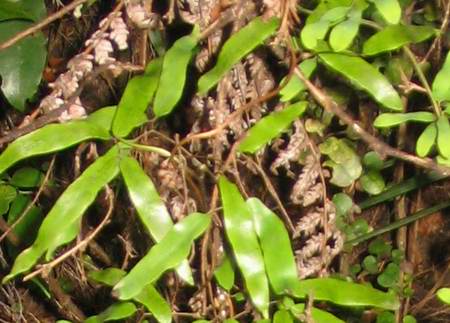
and here's our old mate from the Whangaroa trip, mangemange. I learn from the DoC label that bushmen used to stuff coils of this plant inside a sack to make a rough springy mattress.
